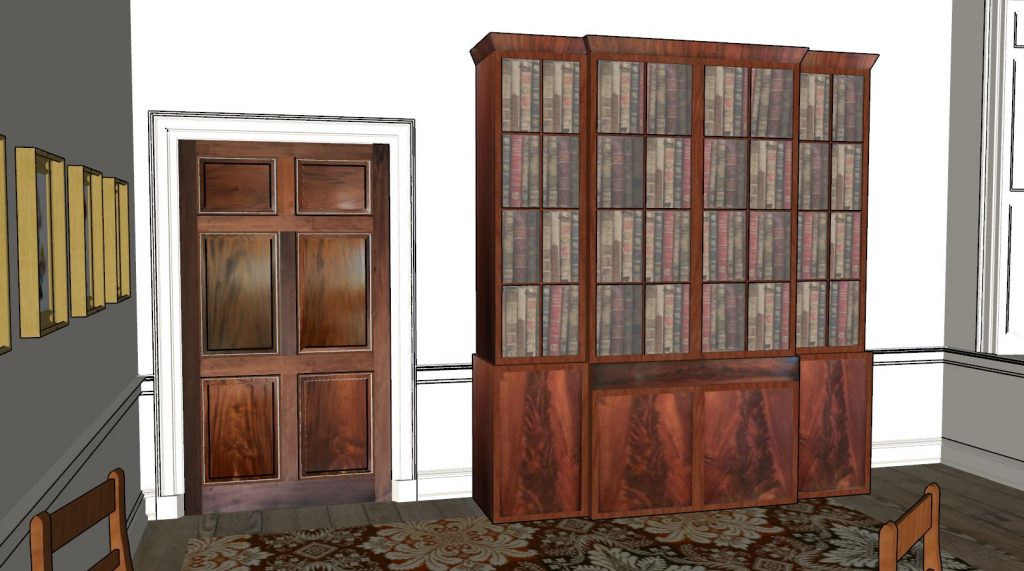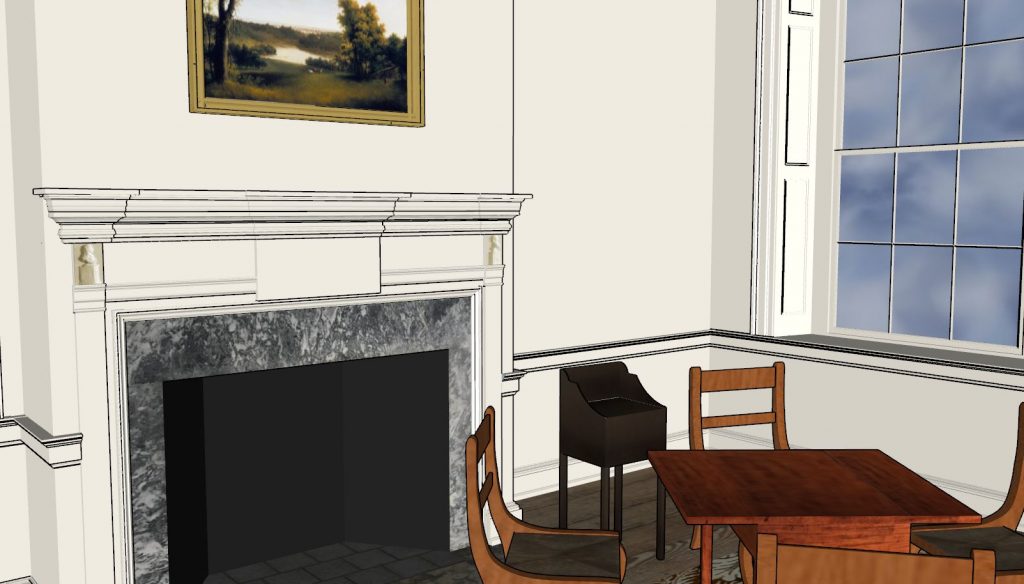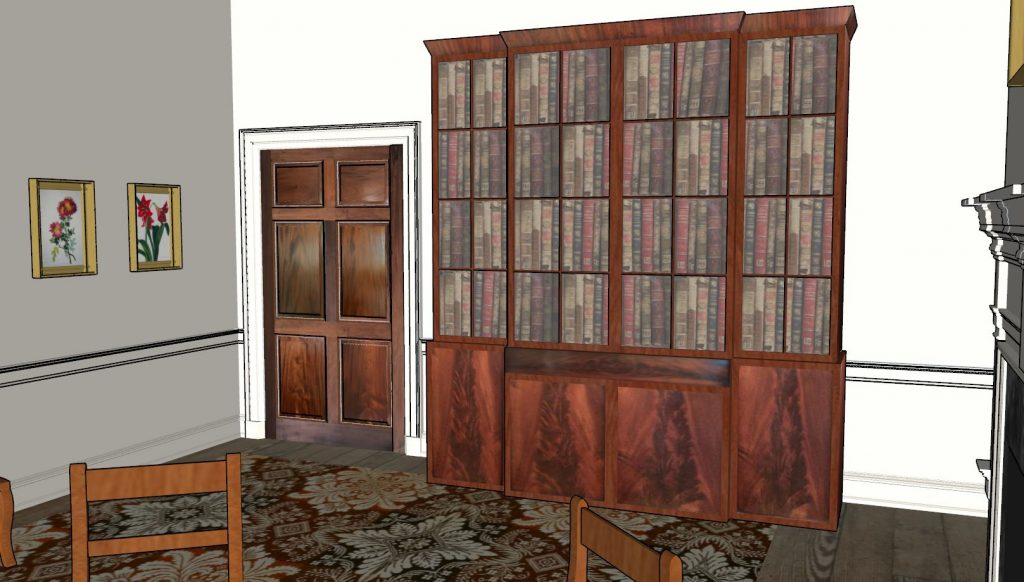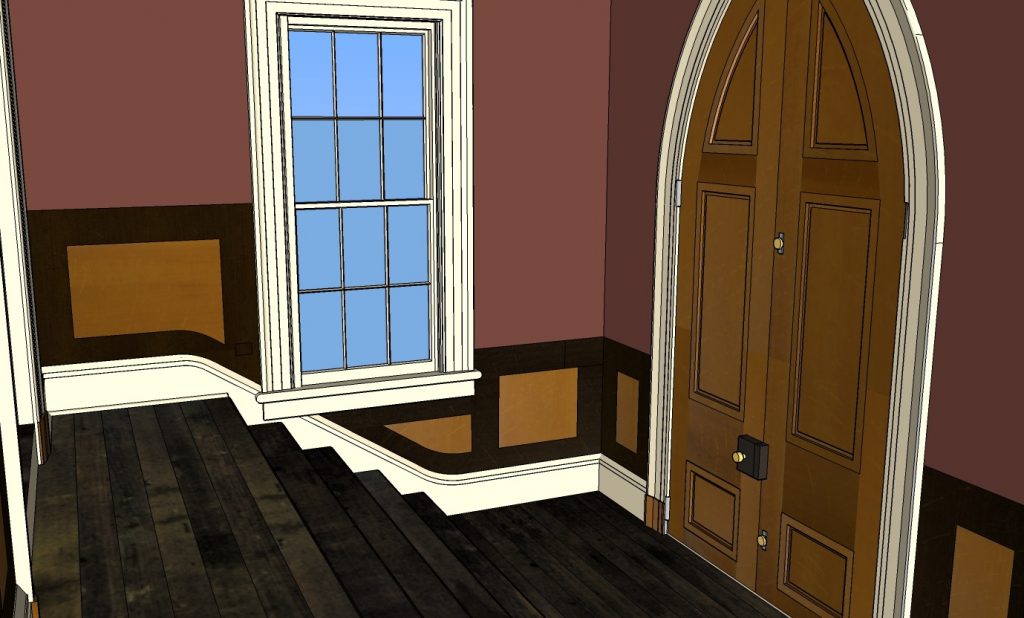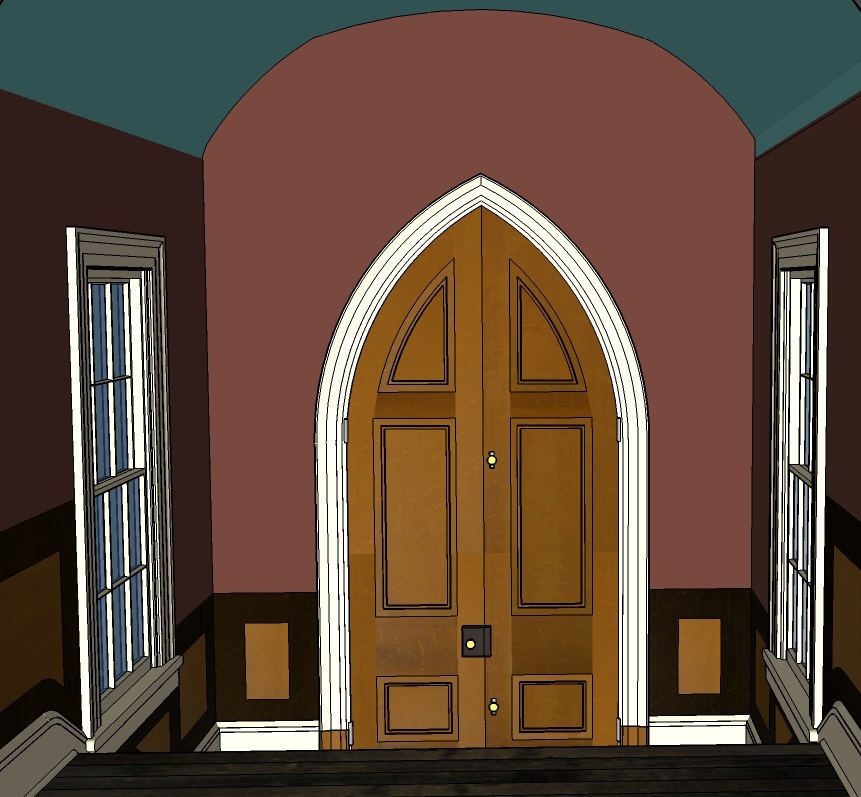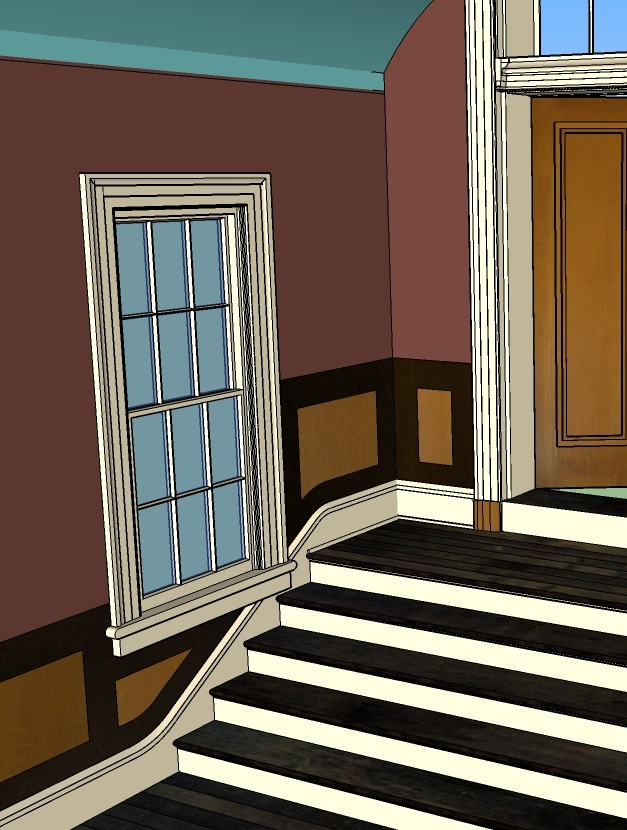Above: Virtual restoration of the vestibule at President Lincoln’s Cottage. Model produced by Mary Fesak and Sam Biggers.
3D modeling is an important tool in the visualization of historic spaces. I have produced several models showing virtual restorations and different treatment options for historic buildings using AutoCAD and SketchUp. In 2015, my colleague Sam Biggers and I undertook an architectural investigation of President Lincoln’s Cottage during an internship with the National Trust for Historic Preservation. We produced a model of the vestibule as it appeared during Lincoln’s occupation using evidence of the 1860s tromp l’oeil scheme imitating wood paneling and the original location of joist pockets below the present-day stair case.
As part of a class project, I also completed a virtual restoration of the library at the George Read II House in New Castle, Delaware. The room that is believed to have been Read’s law office is currently interpreted as an early-twentieth century dining room during the Laird family’s occupation of the house because it has rare wall paper installed by the Lairds. Based on a probate inventory after Read’s death in 1836, period furniture in the Winterthur collections, and paint analysis, the virtual restoration reimagines the room and shows visitors how the space would have looked and functioned differently during the early-nineteenth century.
Below: Images of the model of the Read House law office. Model produced by Mary Fesak.
